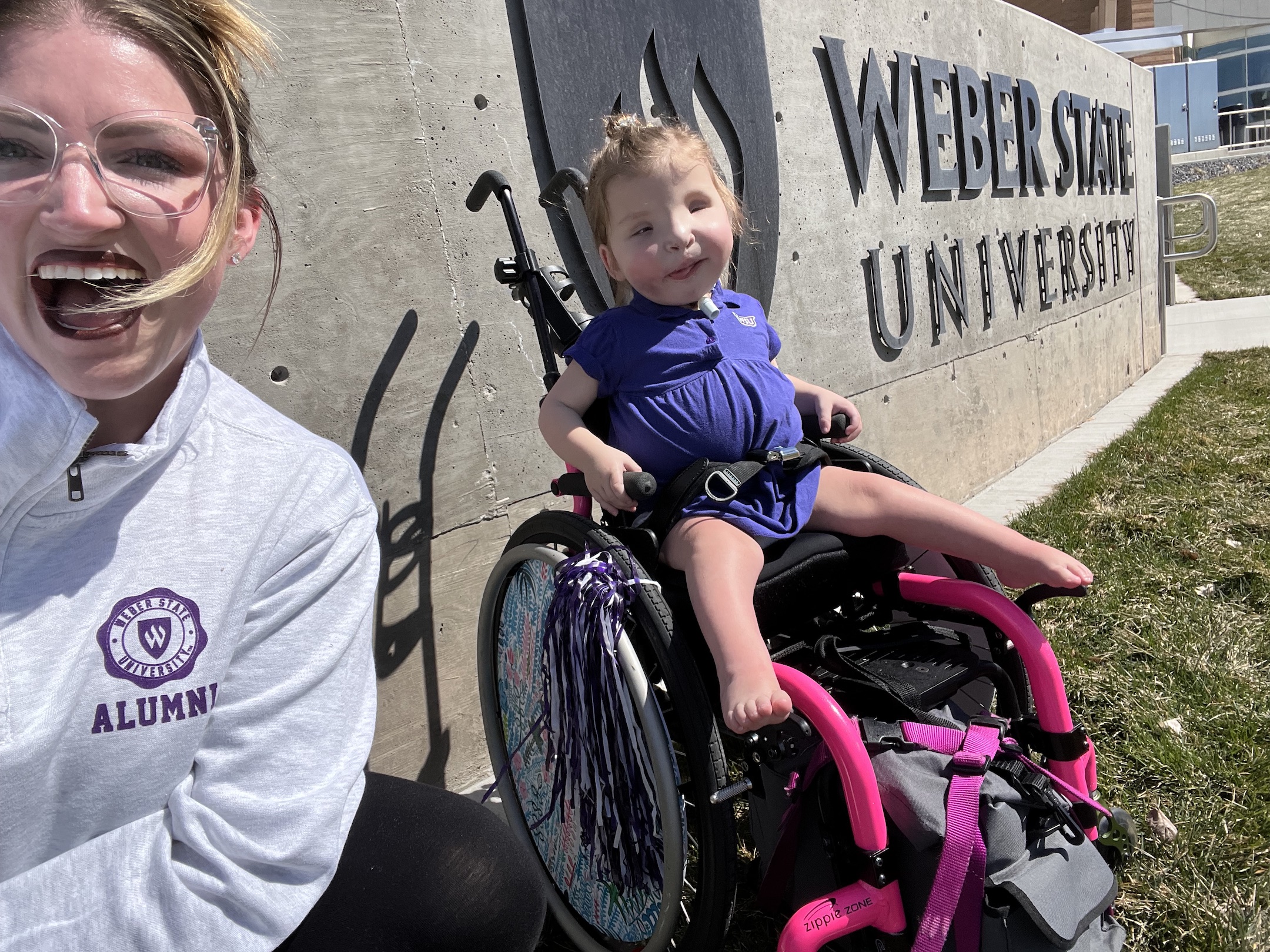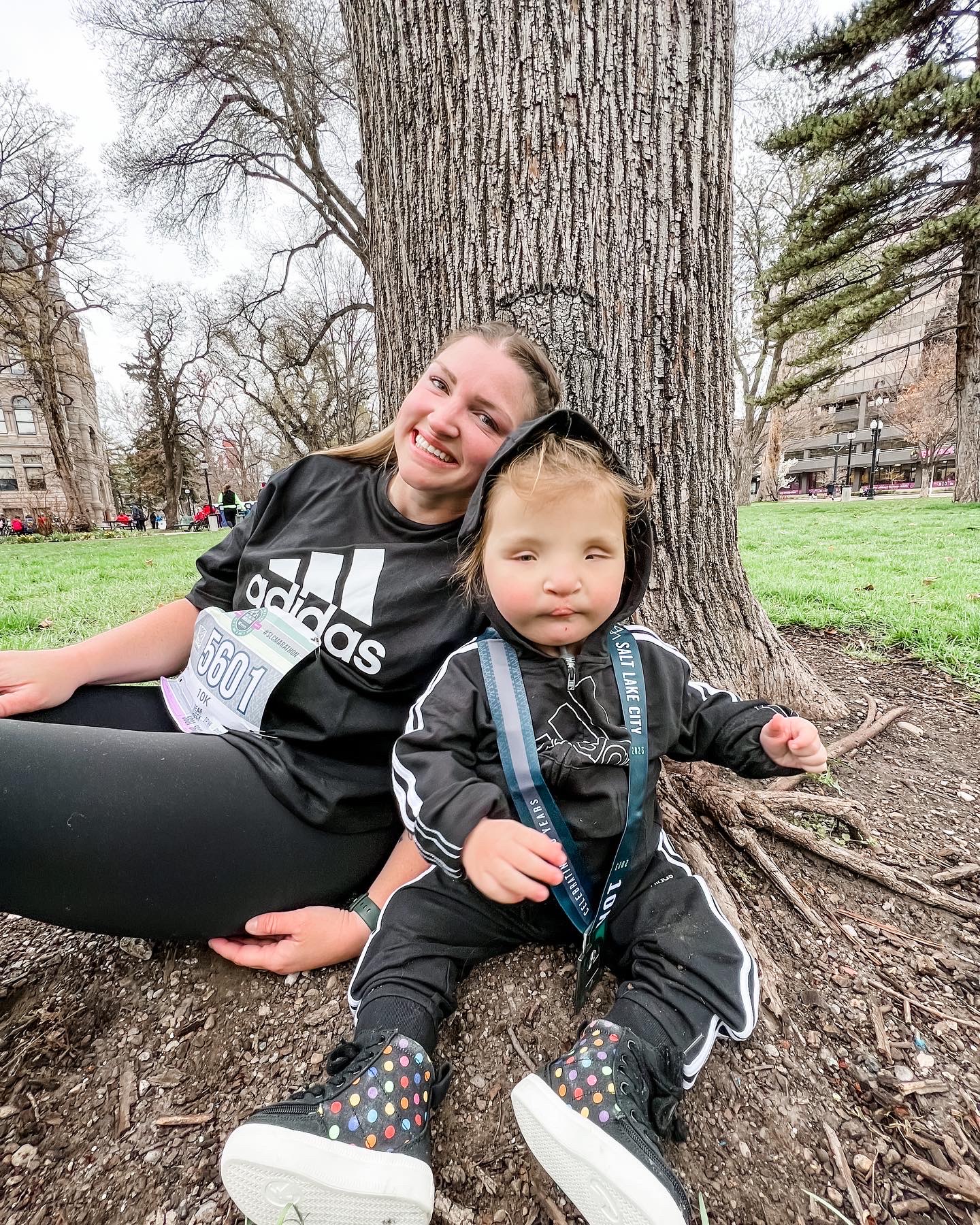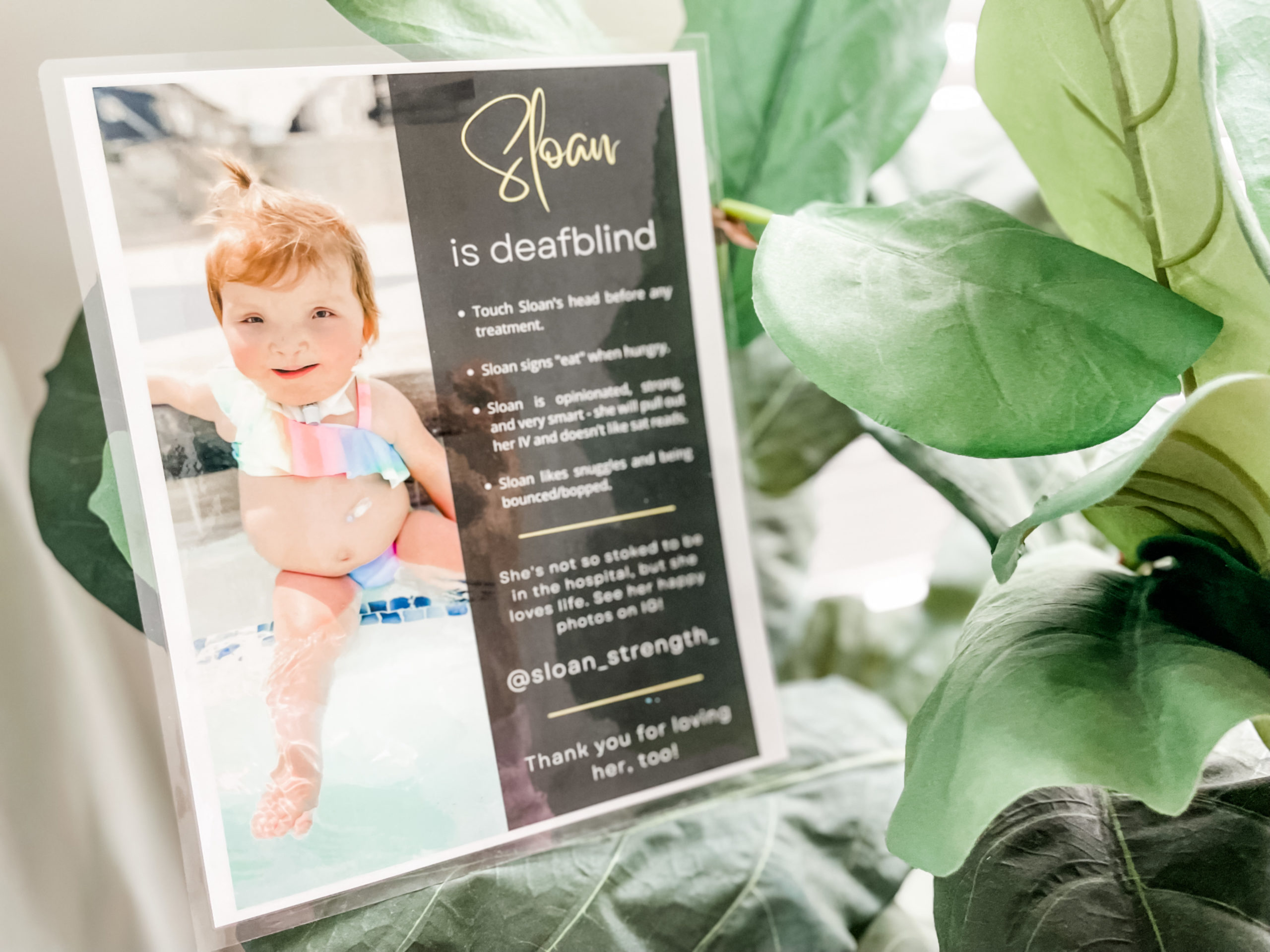I recently went back to Weber State University for their American Sign Language program! It has already been a fast, immersive learning experience and I’m having a tough time keeping up…But I’m doing it. (Kinda.)
Anyway, in sharing some updates around going back to school for ASL – I received several questions on Instagram asking why I would be going to school for ASL if Sloan can’t actually see me signing.
That might feel like a jarring question to some, but it’s actually a) our reality and b) a legit one – because there’s a unique style of sign language just for the DeafBlind: tactile sign. And it’s a style of sign language we are currently teaching Sloan.
Tactile sign is an adapted form of sign language, typically signed into the hands of a DeafBlind person – and the DeafBlind person signs back through hands when they need to respond. While adapted, tactile sign is still extremely similar to ASL – it’s almost like tactile sign is its own dialect in the broader world of sign language.
So learning ASL makes a lot of sense for so many reasons. In life with Sloan, I can adapt it to her needs and help her learn to communicate using tactile sign.
Beyond communicating with Sloan: I also simply wanted to do my part in fostering accessibility by learning ASL, too. My end goal is to receive an interpreter certification (feels like a pipe dream with how hard ASL is for me to learn right now!) – and I would love to be present and interpret for the stuff that goes largely ignored and inaccessible in our community. Stuff like city council meetings, local speaker events, protests, political meetings, etc.
And, lastly, I simply want to be able to communicate with deaf friends.
So, for those interested in deafblind communication and tactile signing, I’ve listed a few resources below that I’ve found educational on DeafBlindness, DeafBlind interveners, and tactile sign.
DeafBlind Info
DeafBlind: Blind but not Blind (TED Talk)
Why I work to remove access barriers for students with disabilities (TED TALK)
The evolution of deafblind communication (Perkins School for the Blind)
Parent Perspectives on Interveners (National Center on DeafBlindness)



